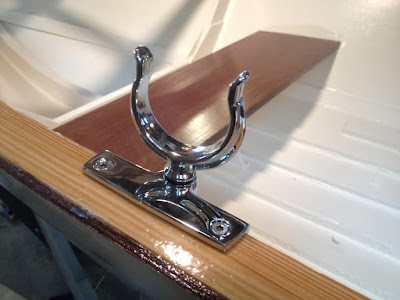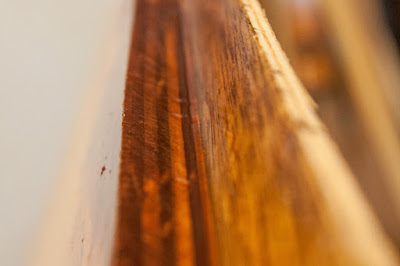 |
| Glen-L Crackerbox design |
Not long ago, a builder in Ireland completed his construction of a beautiful Glen-L Crackerbox. The Crackerbox design is a 15' rear-cockpit, inboard speedster that is reminiscent of the "Gentleman's Racer" boats of the 1930's.
Last spring, this beautifully-constructed boat, named "Old's Cool," sank in Lough Ree.
 |
| These are among the last photos of Old's Cool before she sank. |
Fortunately, the boat's owner survived the incident unharmed. The incident is a chilling reminder of just how fast something can go wrong on the water. So much time and effort goes into building these boats, and it's a tragedy when something like this happens. But it can happen, in the blink of an eye. I hope that his efforts of locating and raising the boat will soon be successful.
I learned about this incident only recently... not long after I'd heard a similar story of another home-built boat that sunk in North Carolina in 2003. A man had built a replica of a 1934 Gar Wood Speedster. On the boat's first voyage at the 2003 Lake Norman Antique Boat Show, the boat's owner was racing another boat. He lost control, and the boat barrel-rolled and sank to the bottom of Lake Norman. After 11 years, the boat was located and raised in 2014.
I don't pretend to compare my little Utility boat with either of these fine craft. However, Perseverance now represents to me the better part of four years' work and dreaming. And, if either of these fine boats can sink in the blink of an eye... so can mine.
So, I'm now seriously reconsidering flotation foam. The question is: "Where to put it?"
There aren't a whole lot of options. It's a small boat, but there is a good amount of unused space up forward, beneath the deck. I have considered adding a bulkhead at the crossbeam of the deck framing, then filling the area forward of the bulkhead with flotation foam. Would that provide an adequate amount of buoyancy to keep the boat from sinking? Who knows. One potential problem is that, in the event the boat fills with water, flotation foam at only the bow would at best keep the boat afloat vertically. In such an event, it might be better than nothing, as long as the boat could be retrieved before sinking.
Other options might be to add some foam under the seats. That might mess up the simple, classic aesthetic of the boat.... but then again, who cares about aesthetics when the boat is filling with water?
 |
| One option might be to fashion a bulkhead at the point of the forward-most deck beam. It should be relatively easy to fill the space with flotation foam before the deck is constructed. |
 |
| Under the rear seat? Perhaps. The trick would be blending it with the aesthetic of the boat, and not restricting water flow in the bilge. |

















































